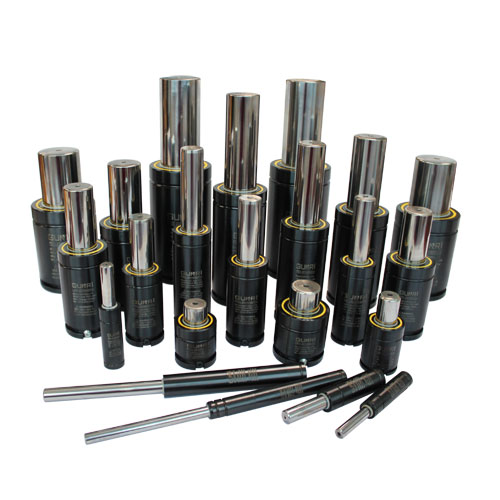Nitrogen Gas Springs vs. Traditional Springs in Stamping Dies
In the realm of stamping dies, the choice between nitrogen gas springs and traditional mechanical springs can significantly impact efficiency, precision, and overall performance. In this article, we delve into the differences, advantages, disadvantages, and scenarios for selecting nitrogen gas springs over conventional springs in stamping applications.
Nitrogen Gas Springs vs. Traditional Springs: Unveiling the Differences
1. Structural Variation
Nitrogen Gas Springs: These innovative springs utilize compressed nitrogen gas to provide controlled force, delivering consistent and reliable motion in stamping dies.
Traditional Springs: Traditional springs rely on mechanical tension or compression to generate force, which can sometimes result in uneven motion and wear over time.
2. Smooth and Predictable Force
Nitrogen Gas Springs: With nitrogen gas springs, the force is precisely controlled, ensuring uniform and smooth motion. This predictability is essential for maintaining the accuracy of the stamping process.
Traditional Springs: Traditional springs can exhibit fluctuations in force due to factors like temperature changes and wear, leading to potential inconsistencies in the stamping results.
3. Reduced Vibration and Noise
Nitrogen Gas Springs: These springs operate quietly and with minimal vibration, contributing to a quieter and more stable stamping process.
Traditional Springs: Mechanical springs can generate vibrations and noise during compression and release, which may impact the overall working environment.
Advantages and Disadvantages
Advantages of Nitrogen Gas Springs
- Precision: Nitrogen gas springs offer precise force control, critical for maintaining accurate and repeatable stamping operations.
- Longevity: Due to their controlled motion, nitrogen gas springs experience reduced wear and tend to last longer than traditional springs.
- Reduced Downtime: The predictable force and extended lifespan lead to decreased maintenance requirements and downtime.
- Smooth Operation: Nitrogen gas springs provide smooth, consistent motion, contributing to higher-quality stamped parts.
Disadvantages of Nitrogen Gas Springs
- Cost: Nitrogen gas springs can have a higher upfront cost compared to traditional springs.
- Complex Installation: Their use may require specialized knowledge for installation and maintenance.
Advantages of Traditional Springs
- Cost: Traditional springs generally have lower initial costs compared to nitrogen gas springs.
- Simplicity: They have straightforward installation and maintenance procedures.
- Familiarity: Traditional springs are well-established and widely used in various applications.
Disadvantages of Traditional Springs
- Inconsistent Force: Traditional springs may produce uneven force, leading to variations in stamping results.
- Limited Lifespan: Mechanical wear and tear can lead to shorter lifespans, requiring more frequent replacements.
- Vibration and Noise: The operation of traditional springs can result in vibrations and noise.
Choosing Nitrogen Gas Springs: Scenarios and Considerations
Nitrogen gas springs are particularly advantageous in scenarios where precision, consistency, and reliability are paramount. Consider opting for nitrogen gas springs when:
- Precision Stamping: When producing intricate and precise stamped parts, nitrogen gas springs ensure accurate and repeatable motion, resulting in higher-quality outputs.
- High-Volume Production: For industries requiring large-scale production, the extended lifespan of nitrogen gas springs leads to reduced downtime and maintenance costs.
- Complex Shapes: Nitrogen gas springs can provide the necessary force for stamping complex shapes that demand precision control.
In conclusion, the choice between nitrogen gas springs and traditional springs in stamping dies should be made based on specific application requirements. While traditional springs offer simplicity and cost-effectiveness, nitrogen gas springs provide superior precision, longevity, and reliability. With Nitrogen Gas Springs from Gunri, you gain access to cutting-edge technology that optimizes your stamping efficiency while minimizing production costs.
For more information on our Nitrogen Gas Springs and how they can revolutionize your stamping processes, feel free to contact us for expert guidance and tailored solutions.
Contact Gunri today to explore how Nitrogen Gas Springs can elevate your stamping operations to new heights of precision and efficiency.





